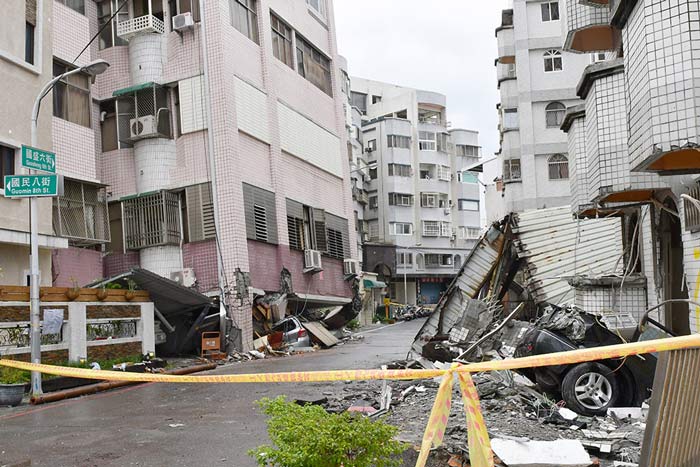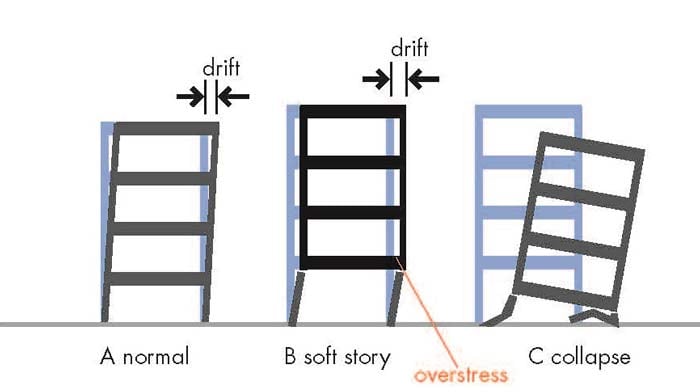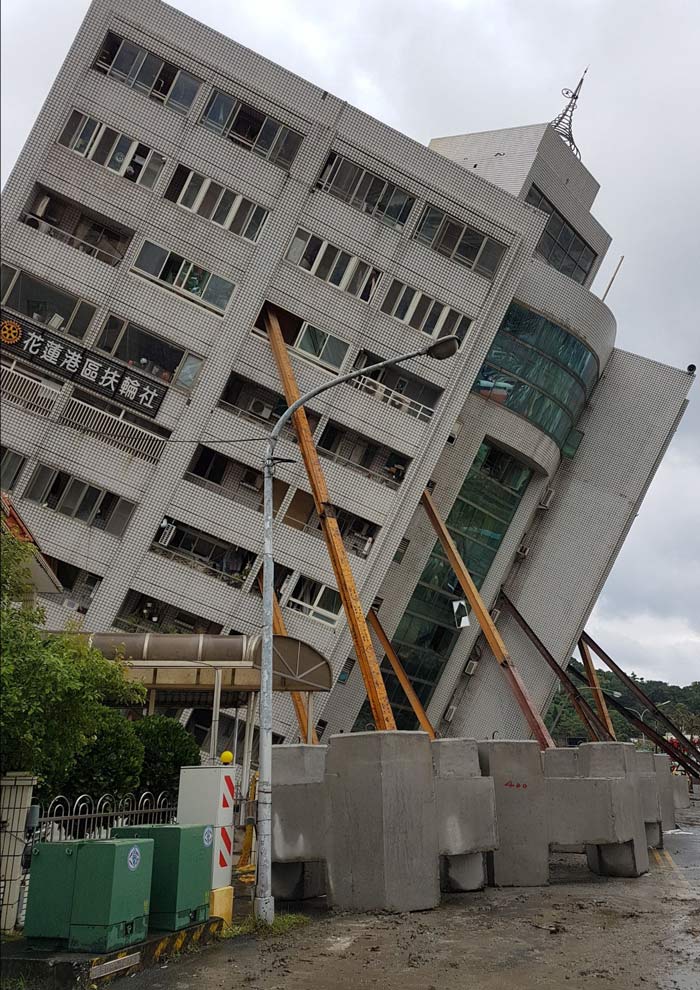Who can forget the dramatic images of the Yun Men Tsui Ti building in Hualian, Taiwan, leaning at an angle of 40° after the M6.4 earthquake that struck north of Hualian on February 6? During this earthquake, four large buildings collapsed and two bridges experienced severe damage. All the collapsed buildings were 10 to 12 stories high and shared one common characteristic—soft stories.

The term soft story is applied to buildings whose ground-level story is less stiff than those above. Soft stories often feature relatively large window and door openings, and have fewer partitions (less bracing) than the overlying levels. Examples include an apartment building with stores on the ground floor, or a house with living space over a garage. Soft stories are a common issue in many mid- to high-rise buildings in Taiwan constructed before the 1999 Chi-Chi earthquake. These buildings—like the Yun Men Tsui Ti—are usually of mixed usage, providing large open commercial spaces on the first few levels and regular apartment units above.

During earthquakes, the lateral movement caused by ground shaking concentrates at the softer stories. A soft or weak story at any height creates a problem, but since the cumulative loads are greatest toward the base of the building, a discontinuity between the first and second floor tends to result in the most serious condition. Soft stories experience a sudden reduction in lateral stiffness and larger story drift (see figure above), resulting in a concentration of deformation in the ground floor that can cause severe damage to total collapse.
The soft story issue has been widely observed in historical earthquakes around the world. In the 1994 Northridge earthquake (California), wood-frame soft story buildings, mostly built with cripple walls, exhibited poor performance. In the 1999 Chi-Chi earthquake (Taiwan), many structures experienced complete collapse due to soft stories.
Another notable building severely damaged during the Hualian earthquake on February 6 was the Marshal Hotel, an 11-story reinforced concrete frame structure built in the 1960s, before the first seismic design code for building in Taiwan (the 1974 code). It had an L-shaped floor plan filling a triangular lot bounded by Sanmin Street, Gongyuan Road, and Xuanyuan Road. The hotel’s second floor was larger in area than its ground floor, with an overhang along Sanmin Street, and the third floor and above were larger still, jutting out additionally along the Gongyuan Road.
Based on images of this structure, AIR engineers infer that the building had been retrofitted with Y-shaped steel columns added under the Gongyuan Road overhang. Although such columns would provide additional support to the gravity load from the overhang, they cannot solve the soft-story issue. During earthquakes, shear forces (caused by lateral seismic load) are distributed in proportion to the stiffness of structural components. The stiffness of such steel columns is negligible compared to the stiffness of reinforced concrete columns. Consequently, most of the lateral load is undertaken by the original structure.

The Yun Men Tsui Ti building was built in 1991, before the 1999 Chi-Chi earthquake. It had 12 stories above ground and a one-story basement. The lateral load resistance of the first two stories was significantly weaker than the residential stories above because of their greater story height and larger open spaces to accommodate businesses, including a hotel and a restaurant that reportedly had recently become an open plan establishment.
The lower two floors of the structure collapsed during the earthquake. The presence of soft stories seems to be a major factor in the complete loss of the building, but construction quality, site conditions, and ground motion intensity appear to have exacerbated the situation. The response spectrum during the earthquake exceeded the design acceleration of this structure. The building is close to the Meilun River on a backfilled site, and local engineers have inferred that liquefaction was probably a contributing factor. Engineers have also raised concerns that remodeling by the hotel owner could have altered the integrity of the original structural system.
Two years ago, on the same date (local time February 6), a 17-story building with a similar soft story collapsed in the Taiwanese city of Tainan after an M6.4 earthquake in Kaohsiung. The Weiguan Golden Dragon apartment block completed in 1994, was the only major building to collapse in the quake; more than 100 people lost their lives. The building’s developer was arrested on suspicion of negligent homicide because shoddy construction was thought to have contributed to the disaster.
Taiwan has sophisticated modern building codes in all active seismic regions to avoid soft stories in building design. Mature retrofit techniques are also available, and their adoption has been encouraged for years, but there are clearly still too many vulnerable structures.



